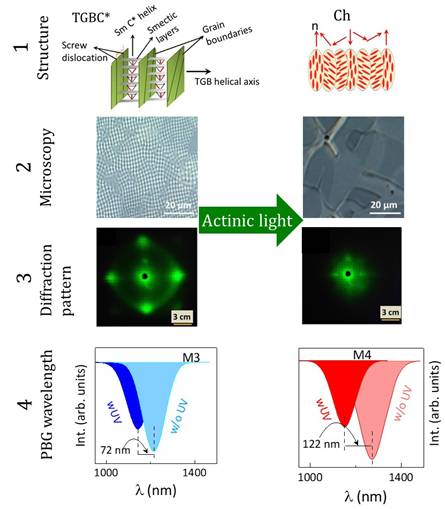New Delhi: Scientists from the Centre for Nano and Soft Matter Sciences (CeNS), an autonomous institute under the Department of Science & Technology (DST), have made a significant breakthrough by tuning the photonic bandgap (PBG) properties of liquid crystals (LCs) using ultraviolet (UV) light. The research, published in the ‘Journal of Molecular Liquids,’ explores the potential of incorporating photoactive organic compounds to alter the PBG features of LC systems.
Photonic crystals (PCs) have garnered attention for their ability to modulate light, making them crucial for the development of next-generation optical devices. Liquid crystals, in particular, have become a focus due to their self-organizing capability. LC systems exhibit PBG structures in two phases—cholesteric (Ch) and twist grain boundary smectic C* (TGBC*) phases, displaying periodic structures in one and three dimensions, respectively.
The CeNS scientists demonstrated the impact of UV light on the one-dimensional and three-dimensional PBG features of LC systems by introducing small amounts of guest photoactive organic compounds with dimer structures. This innovative approach allowed them to tune the wavelength and width of the PBG in the presence of UV light.
The observed features present exciting possibilities, such as the application of the LC system as a selective wavelength mirror with optically tunable wavelengths. Additionally, the memory effect observed in two-dimensional PBG, influenced by UV or actinic light, holds promise for the development of memory devices.
The research team, consisting of Rajalaxmi Sahoo, Reshma C., D.S. Shankar Rao, C.V. Yelamaggad, and S. Krishna Prasad, believes that this breakthrough could pave the way for the creation of advanced optical devices with enhanced functionalities. The ability to manipulate liquid crystal properties through external stimuli like UV light opens up new avenues for the design and development of innovative technologies in the field of photonics.





